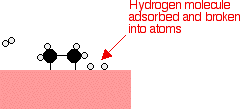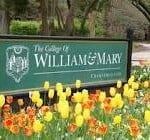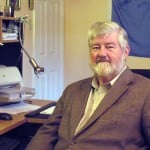The following is a further posting in a series of articles by David French, a patent attorney with 35 years experience, which will review patents of interest touching on the field of Cold Fusion.
This is the second of a two-part outline of a recently published patent application originating from Francesco Piantelli. The first part addressed the content of the disclosure of the application. The second part addresses the scope of patent coverage apparently being sought.
Key patent coverage of the third PCT application claims
Every patent has to end with one or more “Claims” which stipulate the scope of control that the patent applicant aspires to achieve. These claims, appearing at the end of every patent document take the form of numbered sentences. Actually, each numbered passage is a phrase which completes a preamble such as: “I claim” or simply “Claims”. The first of the numbered claims always stands alone. Other claims may refer-back to an earlier claim and adopt the features and limitations included in the earlier claim. Accordingly, such dependent claims are “narrower” in scope than the earlier claims to which they refer. This makes the first claim more important.
An initial impression of the scope of coverage of a patent can be obtained by examining simply Claim 1 . In this case, Claim 1 reads as follows:
1. A method to obtain energy by nuclear reactions between hydrogen (31) and a transition metal (19 18 that go), said method including the steps of:
prearranging (1 10) a primary material (19) comprising a predetermined amount of cluster nanostructures (21) having a number of atoms (38) of said transition metal (19) lower than a predetermined number of atoms;
keeping said hydrogen (31) in contact with said clusters (21);
heating (130) said primary material (19) at an initial process temperature (T-i) higher than a predetermined critical temperature;
dissociation of H2 molecules of said hydrogen (31) and formation of H- ions (35) as a consequence of said step of heating;
impulsively acting (140) on said primary material (19);
orbital capture (150) of said H- ions (35) by said cluster nanostructures (21) as a consequence of said step (140) of impulsively acting;
capture (151) of said H- ions (35) by said atoms (38) of said clusters (21 ), generating a thermal power as a primary reaction heat (Qi);
removing (160) said thermal power, maintaining the temperature of the primary material (19) above said critical temperature,
characterised in that
it provides a step (1 15) of prearranging an amount of a secondary material (28) that faces said primary material (19) and within a predetermined maximum distance (L) from said primary material (19),
said secondary material (28) arranged to interact with protons (35″‘) emitted from said primary material (19) by energy-releasing proton-dependent nuclear reactions that occur with a release of further thermal power in the form of a secondary reaction heat (Q2),
such that said step of removing (160) comprises said generated thermal power as said primary reaction heat (Qi) and said secondary reaction heat (Q2).
[End of claim 1
The numbers shown in parentheses in the above claim are those used in the written description to explain the parts shown in the drawings. Further details of the invention are specified in the subsequent claims, most of which are in dependent form. These are all worth reading.
Claim 1 is written in a European style by which it is assumed that, generally, the description preceding the words “characterized in that” covers things or arrangement which were previously known. The claim as a whole must not describe anything that was previously known in order to meet the novelty requirement. This suggests that the very last paragraph following “characterized in that” provides the claim with its required degree of novelty. It would do so by ensuring that the overall wording of the entire claim does not describe anything that was previously available to the public. Effectively, this patent application is directed to the feature of producing energy by the secondary reaction.
Claim 1 is not in the final form that the applicant may choose to present to individual patent offices around the world, once the application exits the PCT system as of October 26, 2013. But it represents the thinking of the patent attorney presently managing this filing. Claim 1 may or may not describe a process that works. However, this claim can be analyzed for certain technical defects that may cause problems for the eventual owner of any patent that may issue.
Challenge of enforcing such a claim
In order for this claim to be infringed, the patent owner must demonstrate that other parties are contravening the wording of the claim. This means demonstrating that an alleged infringer is carrying out each and every step of the method listed in Claim 1. Unfortunately, this claim includes a number of limitations that might be very hard to prove. Examples are:
– the clusters must have a number of atoms of a transition metal e.g. nickel, that is lower than a predetermined number of atoms (This predetermined number, according to the disclosure, is established by the requirement that this is a number “above which the crystals lose the cluster features”. Nothing more is said as to the critical number of atoms per cluster. Accordingly, this stipulation may be inadequately defined in the patent and in the claim.)
– causing dissociation of H2 molecules to form H- ions as a consequence of heating (Note: nickel can cause the spontaneous dissociation of H2 molecules to form H- ions without heating) e.g.:
” Hydrogen molecules are also adsorbed on to the surface of the nickel. When this happens, the hydrogen molecules are broken into atoms. These can move around on the surface of the nickel.
– orbital capture of H- ions by the cluster nanostructures as a consequence of the step of “impulsively acting” on the clusters (“Impulsively acting” as defined in the disclosure means applying a voltage impulsively but not otherwise defined. This may be another instance of inadequate disclosure);
– capture (presumably nuclear) of the H- ions (presumably those that have already been orbitally captured) by the atoms of said clusters to thereby generate a primary reaction heat (How do you prove that this is occurring?)
– providing an amount of a secondary material, e.g. lithium or boron or a variety of alloys, that faces the primary material and is positioned within a predetermined maximum distance (L) (- defined in the disclosure as corresponding to the average free path that such protons can travel before decaying into atomic hydrogen, e.g between 7 and 8 cm) from said primary material,
– the above steps resulting in the secondary material interacting with protons emitted from said primary material by energy-releasing proton-dependent nuclear reactions that occur with a release of further secondary heat (How do you prove that heat is coming from two different sources?)
It should be apparent that proving that all of these events are occurring in an infringer’s accused energy-generation process may be difficult. This is quite apart from whether or not the above claim describes a process that will work.
This claim is equivalent to defining a recipe for baking cookies in terms of what happens in the oven. This is a very undesirable claim format.
Requirement for invention operability and sufficiency of disclosure
It is an essential requirement of any patent that the invention must work. Furthermore, the description accompanying the patent application must be sufficient to enable knowledgeable workmen to reproduce the invention and produce the promised useful result.
Within the confines of this posting, it is not practical to assess whether the disclosure in this application meets all of these requirements. But as an opening exercise, it will be seen that the premise behind this asserted invention is that proton capture followed by proton emission is at the heart of Low Energy Nuclear Reaction – LENR processes according to Francesco Piantelli.
Future processing of the application
This filing does not have to be presented to an Examiner at a national patent office until after exiting the PCT system. This must occur by month 30 or 31 from the original Italian priority filing date, e.g. by April-May 26, 2013. It is highly likely, and virtually certain before the USPTO, that the applicant will be required to demonstrate that the disclosure in this application delivers what it promises, i.e. heat generated through the process characterized by the above claim.
Apart from Claim 1, Claim 8 represents a separate, independent, characterization of the invention in terms of an apparatus that carries out the process of claim 1. That claim should be reviewed as well. Before national patent offices, the applicant will be entitled to amend these claims further, on the condition that the amended claims are still based upon the original “story” included in the disclosure that became frozen at the time that the PCT filing was made, i.e. April 26, 2011. Accordingly, there will be further interesting developments as this application progresses through the patent system in various countries around the world.




